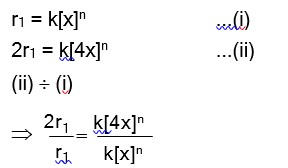Class 12th
Get insights from 12k questions on Class 12th, answered by students, alumni, and experts. You may also ask and answer any question you like about Class 12th
Follow Ask QuestionQuestions
Discussions
Active Users
Followers
New answer posted
a month agoContributor-Level 10
Redox reactions is the basic principle of the electrochemistry. The redox reactions is the process where electrons are transferred between substances. In this process chemical energy gets converted into electrical energy and vice versa.
New answer posted
a month agoContributor-Level 10
In simple words, the study of relationship between electrical energy and chemical reactions is called the Electrochemistry. The concept comprises how chemical reactions can create electrical energy and how electrical energy can generate chemical changes.
New answer posted
a month agoContributor-Level 10
Haemoglobin is a positive colloid. Hence greater is the charge of anion, more effective will be the coagulation of haemoglobin.
Therefore,
Correct order of coagulating power is
New answer posted
a month agoContributor-Level 10
Electrophoresis : The migration of colloidal particles under the influence of an electric field is known as electrophoresis.
New answer posted
a month agoContributor-Level 6
If a solution containing more than 0.9% salt is used, and we place blood cells in it, the water will flow out of the cells, and they will shrink. Such a solution is a hypertonic solution.
Similarly, if a solution contains less than 0.9% salt, the water will flow into the cells, and they will enlarge.
New answer posted
a month agoContributor-Level 6
When more solute can be dissolved in a solution at a constant temperature, it is an unsaturated solution.
New answer posted
a month agoContributor-Level 6
When no more solute can be dissolved in a solution at a constant temperature and pressure, it is called a saturated solution.
Taking an Exam? Selecting a College?
Get authentic answers from experts, students and alumni that you won't find anywhere else
Sign Up on ShikshaOn Shiksha, get access to
- 65k Colleges
- 1.2k Exams
- 678k Reviews
- 1800k Answers




 = 3*10
= 3*10